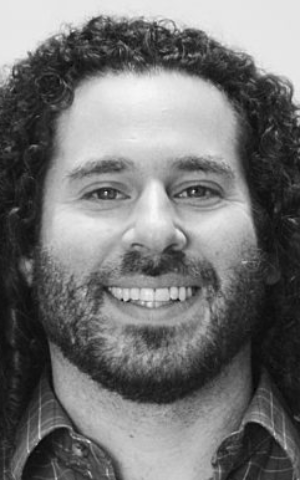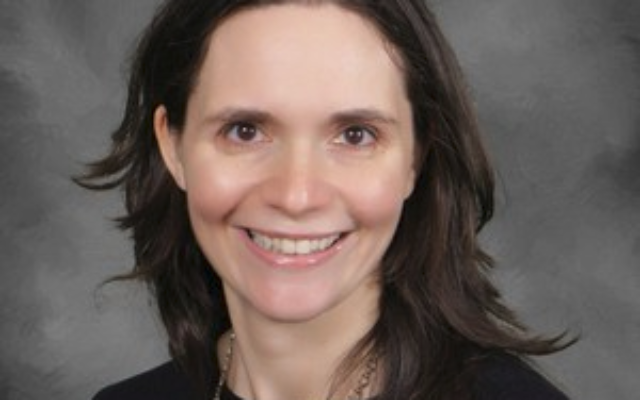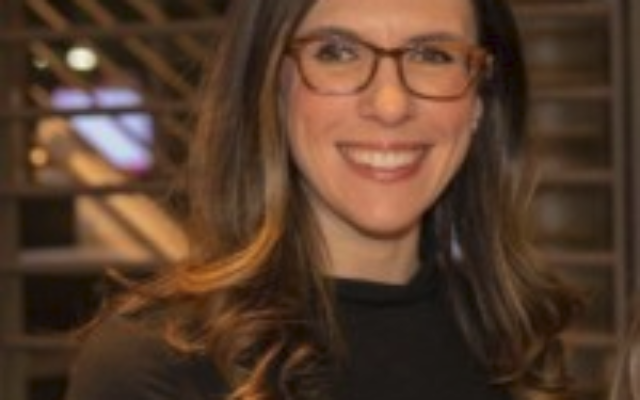What Fuels Teen Addiction?
Students, parents and addiction experts spoke to the AJT about the factors fueling teen drug use and abuse.
Chana Shapiro is an educator, writer, editor and illustrator whose work has appeared in journals, newspapers and magazines. She is a regular contributor to the AJT.
Karen, a junior at a suburban public high school in north Atlanta, says that it’s very easy to get drugs; students in her school know people who can supply them. “In our school, kids are driven to achieve academically,” she explains. “The most common drug is Adderall, [a medication containing an amphetamine salt mixture used to treat ADHD]. It’s like ‘speed’ that helps you stay alert and keep going full force. Some students have a prescription for it, and then they sell it to other kids.
“A lot of kids go to psychiatrists. I think the isolation during the pandemic made our anxiety and depression even worse than usual. I probably know 10 people who’ve been patients at Peachford Hospital or other rehab places like the Berman Center. At my school, vaping and drinking beer are more common than marijuana or other drugs, but there’s that, too. I don’t drink, but my brother, who’s a senior, and his best friends are allowed to drink at each other’s homes when their parents are present. My parents believe that he has to learn to drink responsibly before he goes to college.”
Substance use by teens can have a lasting impact. The American Academy of Pediatrics (AAP), through a cooperative agreement with the Centers for Disease Control and Prevention (CDC), developed a guide for substance-use screening in pediatric practices to address substance use concerns. The AAP recommends starting screening at nine years of age. Among the AAP findings are that by 12th grade, about two thirds of students have tried alcohol, half of 9th through 12th graders have used marijuana, 2 out of 10 12th graders have used prescription meds without a prescription, and those from 12 to 20 years of age consume 10% of all alcohol consumed in the United States.
The AAP guide claims that substance use can affect brain development and contribute to heart disease, high blood pressure, and sleep disorders. The earlier teens start trying substances or drinking, the greater their chances of developing addiction later in life.

Jewish Family and Career Services (JF&CS) recently hired Joel Dworkin to lead their Helping Atlantans Manage Substance Abuse (HAMSA) program. His own journey through addiction to recovery enables him to use his experience to help people suffering from alcoholism and drug addiction and their families. In the last year, HAMSA has seen a spike in calls by people in active addiction, or their spouses and family members. HAMSA refers them to treatment facilities and counselors that can help them through recovery.
“I guess you could say everything started in middle school,” Dworkin recalls. That was when he discovered a sample box of Vicodin that his father, a dentist, had in a closet. He thought it would be cool to try drugs. Others did it. He liked it and it was available. His early experimentation led to taking more substances. In 2008, he entered an inpatient treatment center and then a series of significant experiences led him to working with teens in recovery settings.
“My addiction was excruciating, and probably more so for my parents,” Dworkin told the AJT. “They didn’t know initially if I would live or die. For a long time after that, they didn’t know if I would stay clean. And for several years following treatment, they didn’t know if I would be able to function as an independent adult. It took a lot of time, work, and trust-building for them to be OK. In comparison, I always knew how I was doing, so I didn’t have to worry about anyone else. I had it easy.
“Social media and cable news claim that our teens are bombarded with opioids and they’re all at risk. If you look at the National Institute of Health’s (NIH) annual Monitoring the Future study, teen substance use held pretty steady. This year, we had more time to focus on it and the higher baseline level of anxiety. Teen substance use and addiction were a problem when I was a teen and probably when many older than I were teens. What has increased is our awareness of and willingness to confront the problem. Addiction is seen less as a ‘shanda’ (shame) and more as a disease to be treated; we’ve begun normalizing the public discussion of mental health and recovery. More teens are seeking treatment and counseling, and more options are available to them.
“What did increase this year was isolation and the desire to give privacy to kids who were stuck at home. Some used that time to take drugs, overdose, and die. That caused a lot of panic early on; kids were dying who shouldn’t have, who wouldn’t have, because they would have been using with friends, or their parents would have normally checked on them.
“I try to create programs and spaces for teens to speak about drug use and how it has affected them. My personal story may resonate with then. Teens problematically using drugs aren’t bad kids trying to be good. They’re sick kids trying to get well.
“I don’t consider marijuana a gateway drug. This is a misrepresentation of correlation and causation. Marijuana has much less stigma than harder drugs, so most people who use heroin or cocaine first try a less stigmatized drug. Saying marijuana leads to heroin addiction is like saying driving a Toyota Camry leads to crashing a Porsche Cayenne. Unless you’re very wealthy and have a lot of time on your hands, you probably started with the less exclusive drug (and car).
“Most people who use marijuana don’t end up using harder drugs or using drugs problematically. Drug use and addiction are very different things, just like drinking and alcoholism are very different. My role isn’t to tell people not to use drugs; it’s to help people who want to stop but can’t. Through a Jewish lens, HAMSA provides support, resources, and education for those seeking recovery from substance abuse. Anyone looking for help for themselves, a friend, or loved one can call 1-833-HAMSAHELPS or email HAMSAHelps@jfcsatl.org.”

Pam Mason, a school counselor at Atlanta Jewish Academy, notes, “Teen anxiety and depression were on the rise from before the pandemic. In my opinion the social isolation associated with the pandemic has definitely contributed to this already significant issue. We at AJA feel fortunate that our high school students have been in school since last October. Our focus has been on making sure students feel ‘seen’ and have the opportunity to build relationships with their peers and teachers. Our Whole Teen Well-Being Survey identifies the strengths and needs of all our students, and it helps us understand students’ indicators of overall well-being and mental health, and sense of belonging at school. We have also adapted our advisory program to increase the opportunity for peer-to-peer and student/teacher connection. I believe connection and supportive relationships are essential for teen mental health.”
The Weber School held virtual classes throughout the pandemic, and almost 100 percent of the students returned to in-person classes by the second half of the year, so that this year’s start was smooth. Jordan Crawford is the director of Student Support and Enrichment, a new school department. Crawford says, “We’re aware that the pandemic may have a negative impact on some students, but we don’t see the use or effects of drugs or alcohol in school. For students who are worried, exhibit anxiety, or struggle with mask-wearing, we can assure them that there’s an address here at school for mental support.” Crawford meets with students individually as needed, and Weber also has two academic counselors on staff. A peer leadership group is in formation, as well.

The CDC website states that the majority of adults who have a substance use disorder started using substances during their teen and young adult years. Youth with substance use disorders also experience higher rates of physical and mental illnesses, diminished overall health and well-being, and potential progression to addiction. The CDC defines high-risk substance use as “any use by adolescents of substances with a high risk of adverse outcomes (i.e. injury, criminal justice involvement, school dropout, loss of life). This includes misuse of prescription drugs, use of illicit drugs (i.e. cocaine, heroin, methamphetamines, inhalants, hallucinogens, or ecstasy), and use of injection drugs which have a high risk of infection of blood-borne diseases such as HIV and hepatitis.”
Brooke Hartman, a 15-year-old public high school student, spoke to the AJT about drinking and drugs in her school. “Isolation and quarantine are top factors in kids starting these things,” she said. “Mental illness, as well as curiosity, are the causes. I have been diagnosed with generalized anxiety disorder and persistent depressive disorder. My abundant swings of stress and deep depression caused me to start self-destructive behaviors.
“Kids in my school have used drugs or alcohol (outside of a religious context) at least once. I know at least a dozen that use them at school and another 10 or so that deal them. The most common drugs are marijuana and nicotine. They get them from a dealer at our school or another school. If any of them do hard drugs like cocaine, heroin, meth, or LSD, it’s a small percentage. Kids at my school will vape or do carts [a marijuana oil cartridge for vaping] at school in the bathroom or locker rooms, sometimes in the cafeteria. Personally, I have no issue with people doing weed, but nicotine and hard drugs are a problem, and doing it at school is a problem. Teens definitely drink at home, at friends’ houses, at parties. Teens know how to not get in trouble. If they want something they can figure out a way to get it. They know how to dilute a drink just enough so their parents don’t know.
“My school is one of the top schools in Georgia and it’s extremely competitive. Kids here use drugs to take the edge off and de-stress. There’s a distinct line between being irresponsible with drugs and being smart about it. Teachers and administrators know that students get high at school, but they can’t catch or keep track of everyone.”
In the late 1980s, Rabbi Ilan D. Feldman of Congregation Beth Jacob ran Jewish Alcoholics, Chemically-dependent persons and Significant Others (JACS), a program for Jews with drug and alcohol addictions. “I was meeting Jews with addictions at a time when the prevalent myth was that we Jews don’t suffer from addictions to the extent of other groups,” Feldman says. “The Torah warns us about the addictive lures of the world around us, and I know that we Jews are like everybody else. Addiction is not a new issue. The close family no longer exists. Kids today live in their own alternative reality, seldom interacting with, talking to, or enjoying time with their families. In their own room, their connections and reality depend on social media. They can order drugs online and have them delivered. They have credit cards, their parents’ ATM cards and their own money. Isolated young people easily lose the ability to choose not to be dominated by the material drives and lures everywhere.”

At another recent adult party, the celebrant’s teen children and some of their friends were drinking beer, wine and liquor. One of the visiting teens needed a ride home, but the celebrant’s children were too drunk to drive. An adult guest, who took the teen home, was concerned about the drinking. The young passenger answered, “There’s a lot of liquor and weed at that house, and everybody knows it.”
Rachel Welfeld works with troubled teens in the U.S. and Israel. She makes a distinction between marijuana and other drugs. “There are very few teens who haven’t tried marijuana. Typically, marijuana is smoked at parties, and maybe taken from a parents’ stash. That’s a social experience. I appreciate the beneficial uses of medicinal marijuana for anxiety, pain, and eating disorders, and I don’t believe that marijuana is a gateway drug. Hard drugs are a different story. Kids are self-medicating with ecstasy, MDMA (a synthetic drug that alters mood and perception, called ‘molly’) and psychedelics. If a kid doesn’t know a dealer, there are lots of apps that offer menus of what’s available, using constantly changing code words or pictures.”
In 1993, Ira Haber walked out of High Holy Days services at Ahavath Achim Synagogue and entered rehab. He had been using alcohol and drugs socially since high school, and at some point he consciously “crossed the line into using heavy drugs.” At the same time, he was active in the Jewish community and had a good job and loving family. “I knew what I was doing,” Ira states. “I maintained a double life for a long time.” Assistant Rabbi Steven Weiss’ Rosh Hashanah sermon about changing one’s life in the new year inspired Ira to confront and deal with his drug addiction. What he didn’t know was that his wife and parents had already set up an intervention at a residential facility. He ended up depleting his finances and possessions, spending nine months as an inpatient at the Talbot Recovery Campus in South Atlanta, and slowly rebuilding his life. He still attends regular support meetings.
Ira describes drug and alcohol addiction as deadly allergies that lead to dire mental and physical consequences, yet addicts continue to feed their addiction. “I personally know 119 people who have died as a consequence of their addiction,” he says.
In August, Scientific American described a study published in Nature Neuroscience about research headed by Dr. Marco Venniro. He found that social interactions can have a profound effect on drug self-administration and relapse, as well as on the brain’s response to drug-associated cues. Funded by the National Institute of Drug Addiction (NIDA), the research showed that rats will forgo heroin and methamphetamine in favor of spending time with other rats. The research highlights the importance of incorporating voluntary choice between drugs and social rewards into drug addiction research.
The researchers gave rats the option of pressing one lever for a drug infusion or a different lever to open a door to interact with a social peer. The rats opted to open the door more than 90 percent of the time, even when they had previously self-administered methamphetamine for many days and exhibited behaviors that correspond to human addictive behaviors.
“The ultimate objective will be to learn how social rewards might be used to prevent and treat human addiction,” Venniro says. “From a clinical perspective, our findings support wider implementation of social-based behavioral treatments, community reinforcement and also innovative social media approaches.”
Venniro notes that the social lives and responses of people are vastly more complicated than those of rodents. Future animal studies of the role of social reward in drug addiction will have to be meticulously designed and cautiously interpreted to serve their purpose.
- Chana Shapiro
- Community
- Jewish Family & Career Service
- Weber School
- atlanta jewish academy
- Helping Atlanta Manage Substance Abuse
- Centers for Disease Control
- National Institute of Health
- National Institute on Drug Abuse
- Academy of Pediatrics
- ADHD
- Ruth Hartman
- Rachel Welfeld
- Dr. Marco Venniro
- Joel Dworkin
- Pam Mason
- Brooke Hartman
- Rabbi Steven Weiss
- Whole Teen Wellbeing Survey
- Peer Leadership
- Ahavath Achim Synagogue
- High School
- teen isolation
- self-medication
- Substance Abuse
- Addiction
- depression
- Anxiety
- ecstacy
- mollys
- Vaping
- Heroin
- cocaine
- Marijuana
- amphetamines
- LSD
- Peachford Hospital
- Berman Center
- Talbot Recovery Campus
- Monitoring the Future Study
- Alcohol
- Brain Development
- Heart Disease
- high blood pressure
- sleep disorders
- social media
- cable news
- Support
- resources
- Education
- recovery Teen anxiety
- pandemic
- social isolation
- teen mental health
- Congregation Beth Jacob
- Jewish Alcoholics
- Chemically-dependent persons and Significant Others (JACS)
- torah
- Nature Neuroscience
- Rabbi Ilan D. Feldman
- Ira Haber




comments